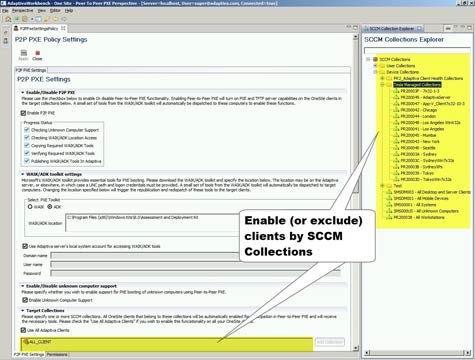With millions of PCs still running Windows XP, the process associated with either replacing or upgrading those systems is rapidly moving up the list of things IT organizations will need to deal with between now and when Microsoft officially ends free support for Windows XP in April of 2014.
To help organizations make that transition, Adaptiva is expanding its operating system deployment (OSD) service for deploying operating systems to include more advanced capabilities that leverage the Preboot Execution Environment (PXE) interface that Microsoft developed to simplify the operating system deployment and upgrade process.
The latest update to the Adaptiva OneSite with Rapid OSD service adds load-balancing for PXE that makes sure that every machine being upgraded doesn’t try to pull images from the same machine at the same time. In addition, Adaptiva is giving administrators more granular control over what content shows up on any given set of machines. Adaptiva has also developed a Virtual State Migration Point capability that allows personalization settings to be migrated between different instances of operating systems.
According to Bill Bernat, director of digital marketing for Adaptiva, Adaptiva can reduce the time it takes to install Windows operating systems across an enterprise by as much as 50 percent. Because Adaptiva relies on a peer-to-peer approach to copying images, organizations can simultaneously update thousands of machines with no need to rely on a central sever to distribute copies of Windows. Instead, Adaptiva automatically finds the local systems with the amount of disk and memory space needed to be able to temporarily serve as the distribution point for Windows images, which in turn eliminates any pressure a traditional upgrade process might put on the wide area network (WAN).
While there is no shortage of Windows upgrade options, anything that reduces the time spent on this process is likely to be welcomed by end users and IT personnel alike. End users, naturally, want to regain access to their machines as quickly as possible. IT staff, meanwhile, generally have more pressing matters to attend to than babysitting PCs during an upgrade process that by all rights should be done in a matter of hours and days rather than weeks and months.



